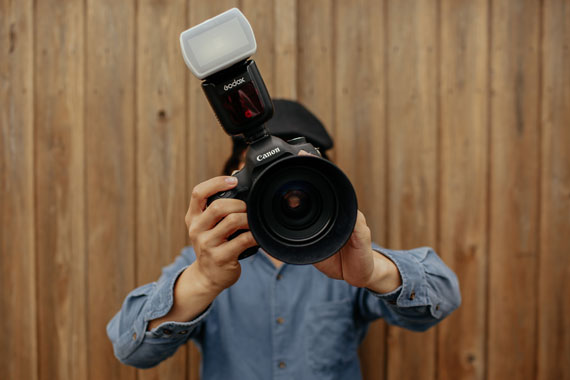Flash photography is one area in which not all photographers may be fully proficient. Flash can be tricky to use, often resulting in over-exposed images that look amateur. Something you should hide away in a bottom drawer, certainly not publish in a glossy or show in a gallery! Love it or hate it, mastering your flash can yield surprisingly solid results, though.
Fill flash photography is particularly effective at balancing exposure for backlit subjects on daytime outdoor shoots. A self-proclaimed modern renaissance man and daytime flash user, Gaku Lange has some tips on how to go about it.
Why Use Fill Flash During the Day?
A Tokyo native, Gaku regularly shoots portraits and street photography of his friends outdoors during the day. One caveat is that his subjects’ faces generally end up underexposed if backlit. Fill flash allows him to illuminate them sufficiently to capture all that detail. Yes, even if the sun is right behind them.
I just wanted to make this video to show you how flash isn’t just for nighttime photography. It’s very useful during the day. It’s something that I use all the time, whether that be for client shooting or just with friends…
In this fill flash YouTube tutorial, Gaku takes a few test shots with and without the flash. As viewers can see, the difference is clearly distinguishable. His friend Peace’s face is flatteringly illuminated and glowing in the fill flash shots. In contrast, it’s much darker and more muddled in the non-flash images.
Which Flash Photography Equipment is Best?
If he’s using his retro CONTAX T3 35mm compact point-and-shoot film camera, Gaku will use the in-built flash. However, you have more options open to you with professional DSLR and mirrorless cameras.

Photo captured by Tom Pumford
While you can use the in-built flash, Gaku recommends and mostly uses speedlights himself. External hot shoe flashes such as the Nikon Speedlight SB-600, Contax TLA 280, and Sunpak Auto 360S Thyristor are his go-to’s.
How Do I Get Rid of Dark Fill Flash Shadows?
While fill flash photography corrects the exposure issues for backlit images, it comes with its own problems. Dark, sharp shadows on subjects’ faces and clothing are a typical side-effect of fill flash photography.
Gaku has some tips to share on how to solve these problems. First off, you can cover the flash with a thin white cloth or gauze to diffuse the light and shadows. Or you can use a reflector to achieve a broader, softer glow.
Wrapping Up
Day or night, flash can help you get the most out of your images. Gaku uses it to illuminate his shots, particularly portraits, which center on the faces and gestures of his subject. Try his tips out for yourself to see first-hand what fill flash can do for your photography and portfolio!
Like This Article?
Don't Miss The Next One!
Join over 100,000 photographers of all experience levels who receive our free photography tips and articles to stay current:





